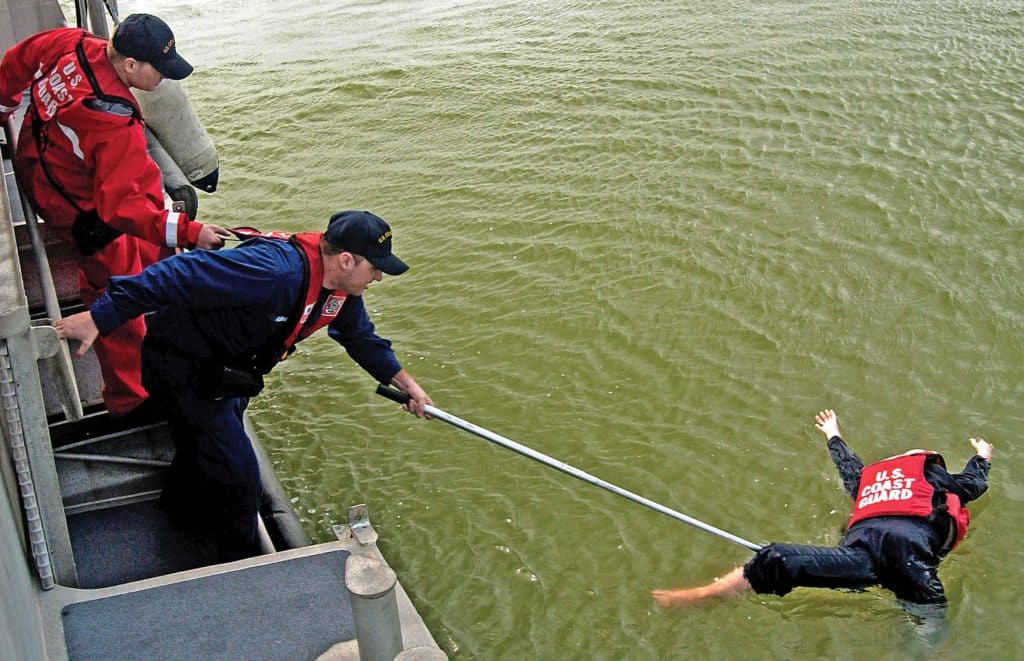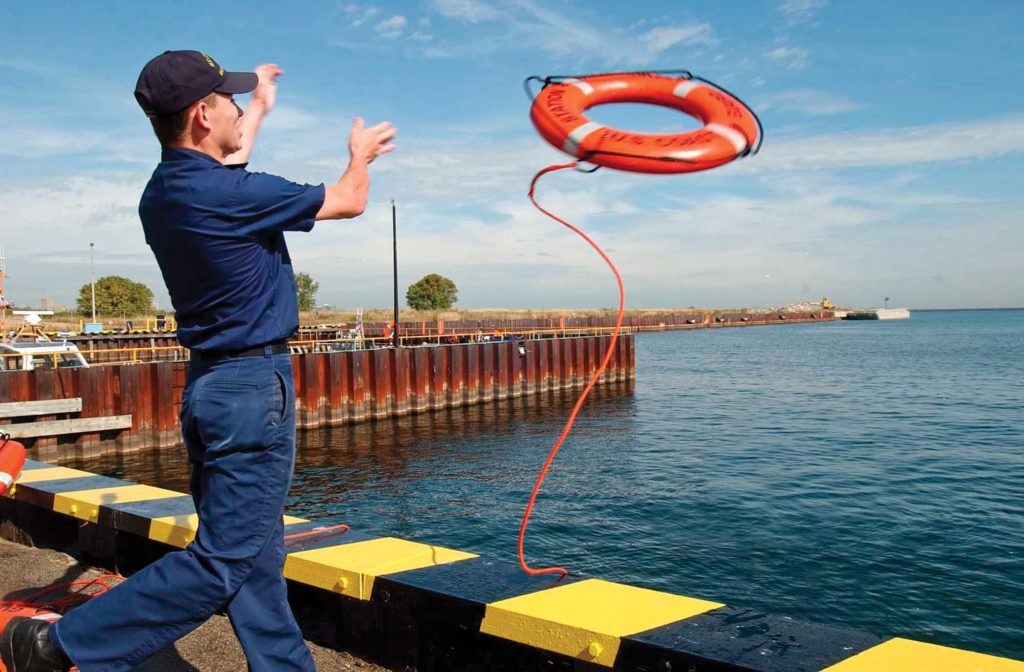
My sister brought her boyfriend, my future brother-in-law it turned out, with her on my boat for a day of tubing and adventure.
Though I had the best of intentions, when it was his turn on the tube, I might have spun the wheel a little too aggressively and sent him flying off. In the process, he separated his shoulder and couldn’t help himself back into the boat. As I struggled to help him even slide up onto the swim platform, I gained a new appreciation of what it would take to help a boater who has fallen overboard.
Hopefully, a man-overboard (MOB) situation is something you’ll never have to deal with on the water, but if you have anything from a stunned tuber on the lake to an overboard angler on a canyon trip, it’s important to know what—and what not—to do. You should also revisit this information every few years. Whether you’re refreshing your knowledge or learning it for the first time, here’s how to help an overboard boater.
Stay in the Boat
When someone goes overboard, particularly if they remain close to the boat after it happens, your first instinct might be to jump in after him or her. This is a bad idea. If you have other crewmembers still on board, now they have two people in the water to account for instead of one. And if you’re the only other person on the boat, that leaves no one to help you back aboard, handle the helm, or call for help if needed.
Keep Eyes on the Prize
When someone falls overboard, someone other than the captain should lock eyes on the person in the water and never let the overboard victim leave their line of sight. The spotter should extend their arm and keep pointing at the person to help the captain operating the boat stay aware of the victim’s location in the water.
Make Circles
When approaching a person in the water, do not drive straight at them. You could lose sight of their location and risk running over them. If possible, make a circle around the person, keeping the boat at idle speed. Approach from a downwind or down-current position so the boat does not get pushed on top of them. As you get close and establish a rescue position, kill the engines so as not to cause the prop to endanger the person.

Throw First
Every Coast Guard kit should include a throwable life jacket or PFD with a section of rope attached. If the person is conscious and able to grab on to the PFD, throw it as close as possible to them and attach the bitter end of the rope to a cleat. Once the person has grabbed the throwable life jacket, use the rope to pull them back into the boat.
If You Have to Go…
If the person in the water is unconscious or potentially drowning, a crewmember may have to break rule No. 1 and jump in the water to assist. If so, that crewmember should don a life jacket, and attach a safety line to the jacket and the boat. If possible, the rescuer should approach the victim from behind so the victim can’t grab on and pull the rescuer underwater in a panic. Then the crew still on board can pull them both back with the safety tether rather than have the rescuer struggle to swim for both of them.
Back on Board
Getting someone back onto the swim platform may require turning their back to the boat and hoisting them from the armpits. You may need to use a sling, or even a rope in a pinch, to help haul them out of the water. Once back on board, if the MOB needs medical attention, call for help immediately.
The U.S. Coast Guard is asking all boat owners and operators to help reduce fatalities, injuries, property damage, and associated healthcare costs related to recreational boating accidents by taking personal responsibility for their own safety and the safety of their passengers. Essential steps include: wearing a life jacket at all times and requiring passengers to do the same; never boating under the influence (BUI); successfully completing a boating safety course; and getting a Vessel Safety Check (VSC) annually from local U.S. Coast Guard Auxiliary, United States Power Squadrons(r), or your state boating agency’s Vessel Examiners. The U.S. Coast Guard reminds all boaters to “Boat Responsibly!” For more tips on boating safety, visit www.uscgboating.org.








